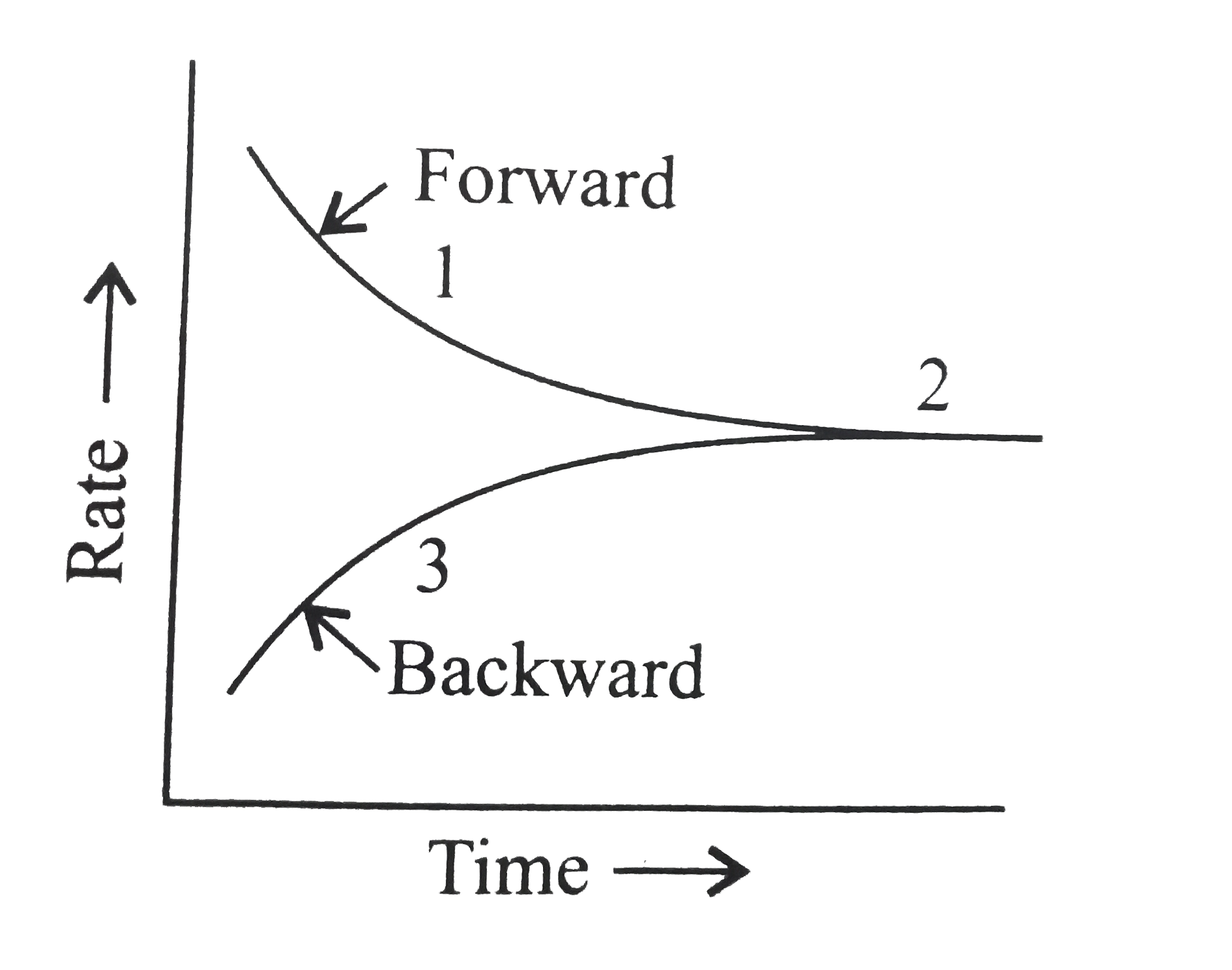In the reaction
PCl5(g)⇔PCl3(g)+Cl2(g)
a graph in plotted to show the variation of rate of forward and backward
reactions against time. Which of the following is correct?

Q>K
Q=K Q<K
321
123
231
213
The correct Answer is:A
Step by step video & image solution for In the reaction PCl_(5)(g)hArrPCl_(3)(g)+Cl_(2)(g) a graph in plotted to show the variation of rate of forward and backward reactions against time. Which of the following is correct? QgtK Q=K QltK by Chemistry experts to help you in doubts & scoring excellent marks in Class 11 exams.
Updated on:21/07/2023Topper's Solved these Questions
- CHEMICAL EQUILIBRIUMBOOK - RESONANCE ENGLISHCHAPTER - CHEMICAL EQUILIBRIUMEXERCISE - Advanced Level Problems (Part-2)(Section-1)
7 Videos
- CHEMICAL EQUILIBRIUMBOOK - RESONANCE ENGLISHCHAPTER - CHEMICAL EQUILIBRIUMEXERCISE - Advanced Level Problems (Part-2)(Section-2)
6 Videos
- CHEMICAL EQUILIBRIUMBOOK - RESONANCE ENGLISHCHAPTER - CHEMICAL EQUILIBRIUMEXERCISE - Exercise-3 (Part-2)
17 Videos
- CHEMICAL BONDINGBOOK - RESONANCE ENGLISHCHAPTER - CHEMICAL BONDINGEXERCISE - ORGANIC CHEMISTRY(Fundamental Concept )
6 Videos
- D & F-BLOCK ELEMENTS & THEIR IMPORTANT COMPOUNDS BOOK - RESONANCE ENGLISHCHAPTER - D & F-BLOCK ELEMENTS & THEIR IMPORTANT COMPOUNDS EXERCISE - Match the column
1 Videos
Similar Questions
Knowledge Check
For the reaction : PCl5(g)→PCl3(g)+Cl2(g):
A(a) Equal volumes of PCl5,PCl3andCl2 are present.B(b) Equal masses of PCl5,PCl3andCl2 are present.C(c) The concentrations of PCl5,PCl3andCl2 become constant.D(d) Reaction stopsFor the reaction,
PCl5(g)⇔PCl3(g)+Cl2(g), the forward reaction at constant temperature is favoured by:Aa. introducing an inert gas at constant volumeBb.introducing Cl2 at constant volumeCc. introducing PCl5 at constant volumeDd. reducing the volume of the container.
For the reaction PCl5(g)⇔PCl3(g)+Cl2(g) the forward reaction at constant temperature is favoured by
View SolutionMass action rato or reaction quotient Q for a reaction can be calculate using the law of masss action
A(g)+B(g)⇔C(g)+D(g)
Q=[C][D][A][B]
The value of Q decides whether the reaction is at equilibrium or not.
At equilibrium, Q=K
For an equilibrium process, Q≠K
when Q>K, reaction will favour backward direction and when Q<K, it will favour direction.
Answer the following questions:
In the reaction:
NH4Cl(g)⇔NH3(g)+HCl(g)
a graph is plotted to show that the variation or the rate of forward and backward reaction against time.
Which of following is correct?

View SolutionFor PCl5(g)⇔PCl3(g)+Cl2(g), write the expression of Kc
View SolutionFor the reaction PCl5<⇒PCl3(g)+Cl2(g),ΔH is
View SolutionFor the reaction PCl5(g)⇔PCl3(g)+Cl2(g), the forward reaction at constant temperature favorrd by :
View SolutionFor the gas phase reaction
PCl5→PCl3(g)+Cl2(g)
which of the following conditions are correct?
View Solution
